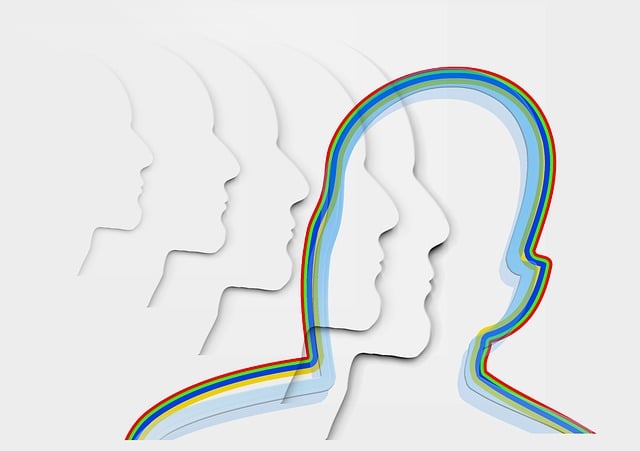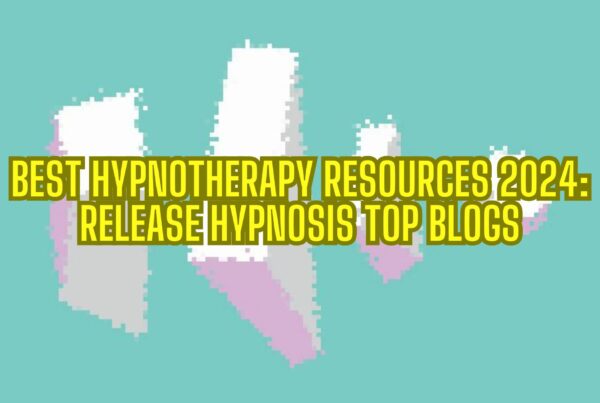Embracing Self-Compassion: A Guide to Comforting Uncomfortable Thoughts and Feelings
For many people, dealing with the challenges that life will inevitably throw our way can be hard. Being human will often see us beat ourselves up when things go wrong. Alternatively, we try to push the uncomfortable feelings away. Rarely do we offer ourselves compassion. That’s where exploring self-compassion in ACT can be useful to change the relationship we experience with these difficult emotions.
What is Self-Compassion?
At its core, self-compassion is the act of treating oneself with the same kindness, concern, and understanding that one would offer to a dear friend. It involves being open to and aware of one’s own suffering, offering kindness and understanding instead of harsh judgment, and recognizing that suffering and personal inadequacy is part of the shared human experience. This compassionate approach allows individuals to hold their experiences in balanced awareness rather than over-identifying with them.
The Importance of Self-Compassion
Embracing self-compassion has profound implications for our mental well-being. Research has shown that individuals who practice self-compassion tend to experience fewer negative emotions like anxiety, depression, and stress. They also exhibit greater emotional resilience, allowing them to bounce back from setbacks more quickly. Moreover, self-compassion fosters a positive mindset, promoting feelings of safety, satisfaction, and interconnectedness. By cultivating a compassionate relationship with oneself, individuals can navigate life’s challenges with greater ease and foster a deeper sense of inner peace.
What is Acceptance and Commitment Therapy (ACT)?
Acceptance and Commitment Therapy, commonly known as ACT, is a therapeutic approach that encourages individuals to embrace their thoughts and feelings rather than resisting or feeling guilty about them. By doing so, one can achieve mental clarity, allowing them to act in ways that align with their values and enrich their lives.
ACT isn’t just about accepting any thought that comes our way. It’s about recognizing which thoughts serve us and which don’t. It’s about committing to actions that align with our values, even when faced with challenging emotions.
The Role of Self-Compassion in ACT
Self-compassion is a cornerstone of ACT. It involves treating ourselves with the same kindness, concern, and understanding that we would offer to a good friend. When we practice self-compassion, we acknowledge that suffering and imperfection are part of the shared human experience.
Why is this important? Because when we’re hard on ourselves, we amplify our discomfort. By being kind to ourselves, we create an environment where we can confront and comfort our uncomfortable thoughts and feelings.
Step-by-Step Guide to Self-Compassion Exercises
1. Mindful Breathing
Start by finding a quiet place. Sit comfortably and close your eyes. Take a deep breath in, hold for a moment, and exhale slowly. As you breathe, notice the rise and fall of your chest. This simple act of mindful breathing can help anchor you in the present moment.
2. Acknowledge Your Feelings
Think about a recent situation that caused you discomfort. Instead of pushing the feeling away, acknowledge it. Say to yourself, “I notice I’m feeling [emotion]. It’s okay to feel this way.”
3. Speak Kindly to Yourself
Imagine a dear friend was experiencing the same feeling. What would you say to them? Now, direct those words of comfort and understanding to yourself.
4. Hand on Heart
Place your hand over your heart. Feel its warmth and gentle pressure. This simple gesture can evoke feelings of love, safety, and comfort.
5. Visualize a Safe Place
Imagine a place where you feel completely at ease. It could be a real place or a place from your imagination. Visualize yourself there, soaking in the feelings of safety and comfort.
6. Affirmations
Create a list of positive affirmations that resonate with you. For example, “I am worthy of love and understanding.” Repeat these affirmations to yourself, especially during challenging times.
Another Way to Self-Compassion
- Setting the Stage
- Sit upright with feet on the floor and back straight.
- Close your eyes or fix them on a spot.
- Take a few slow, deep breaths, focusing on the sensation of the breath flowing in and out.
- Body Scan
- Scan your body from head to toe, observing any sensations.
- Zoom in on the part of your body where you feel the most intense emotion.
- Curious Observation
- Observe the feeling closely, as if you’re a scientist studying it for the first time.
- Note its shape, intensity, and location.
- Allow thoughts to come and go, returning your focus to the sensation.
- Breathing into the Feeling
- Imagine your breath flowing into and around the feeling.
- As you breathe, visualize space opening up inside you, expanding around the feeling.
- Allowance
- Allow the feeling to exist without trying to change or resist it.
- If urges arise to fight or push the feeling away, simply acknowledge them without acting.
- Objectification
- Visualize the feeling as an object, noting its shape, state (liquid, solid, gas), movement, color, and texture.
- Remember that you are larger than this object, no matter its size.
- Normalization
- Recognize that this feeling indicates you’re a caring human.
- Understand that such feelings arise when there’s a gap between desires and reality.
- Self-Compassion Gesture
- Place a hand on the part of your body where the feeling is most intense.
- Imagine warmth and healing energy flowing from your hand, not to eliminate the feeling, but to accommodate it.
- Visualize holding the feeling gently, as you would a distressed baby or animal.
- Expanding Awareness
- Visualize life as a stage show, with your feelings, thoughts, and senses as the actors.
- Gradually increase your awareness, noticing your body, the room, and the world around you.
- Move your limbs to reaffirm control over them.
- Stretch, open your eyes, and reconnect with your surroundings, recognizing the vast world of opportunities around you.
The Lasting Impact of Self-Compassion
When we practice self-compassion regularly, we build resilience. We become better equipped to handle life’s ups and downs. By comforting our uncomfortable thoughts and feelings, we pave the way for emotional well-being.
Remember, it’s a journey. Some days will be easier than others. But with each act of self-compassion, you’re taking a step towards a more understanding and loving relationship with yourself.
Emerging Research on Self-Compassion’s Impact on Well-being
Recent studies have consistently highlighted the profound impact of self-compassion on an individual’s well-being. Researchers have found that individuals who practice self-compassion exercises regularly tend to exhibit lower levels of anxiety, depression, and stress.
Furthermore, these individuals often demonstrate a heightened sense of life satisfaction and overall happiness. The underlying mechanism is believed to be the ability of self-compassion to foster a positive self-view, which acts as a buffer against negative emotions and cognitive patterns.
The Role of Self-Compassion in Resilience and Recovery
Another intriguing area of research focuses on the role of self-compassion in enhancing resilience and promoting recovery from traumatic experiences. Individuals who cultivate self-compassion are found to be better equipped to navigate challenges and adversities. By treating themselves with kindness and understanding, they are able to bounce back from setbacks more effectively.
Moreover, self-compassion exercises have been shown to aid in the healing process, helping individuals process traumatic events with a sense of acceptance and self-worth, ultimately leading to a more rapid and holistic recovery.
Self-Compassion In ACT
Embracing self-compassion through Acceptance and Commitment Therapy offers a transformative approach to dealing with uncomfortable thoughts and feelings. By practicing the exercises mentioned above, not only do we comfort our current state of mind, but we also lay the foundation for lasting mental resilience and well-being. So, the next time you find yourself grappling with challenging emotions, remember to treat yourself with the same kindness and understanding you’d offer to a dear friend.
Release Hypnosis Melbourne Hypnotherapy
Since 2015, Lawrence Akers has been working under the name Release Hypnosis offering Hypnotherapy and ACT based work to the people of Melbourne or an online service. Based on St Kilda Rd, Release Hypnosis is an easy and convenient location to get to and accessible by the ANZAC station train and tram stop. Release Hypnosis can help with a wide range of presenting issues, and I offer a free 30 minute no obligation discovery call for those who are unsure if hypnotherapy is the right way forward for them.
Book Your FREE 30 Minute Consultation With Release Hypnosis NOW!
You may also like to read:
Discovering Purpose and Values: A Path to Mental Well-being
Can’t Visualise in Hypnosis? Here’s What You Can Do Instead.
Dealing with Financial Stress and Crisis: Finding Peace Amid Turbulence
What Is The Success Rate of Hypnosis?
Release Hypnosis Melbourne Hypnotherapy is accessible for people in: Abbotsford, Armadale, Albert Park, Balwyn, Bentleigh, Black Rock, Box Hill, Brighton, Brunswick, Bulleen, Bundoora, Camberwell, Canterbury, Carnegie, Caulfield, Chadstone, Cheltenham, Clayton, Coburg, Collingwood, Deer Park, Doncaster, Elsternwick, Eltham, Elwood, Epping, Essendon, Fairfield, Fitzroy, Footscray, Glen Iris, Glen Waverley, Glenhuntly, Greensborough, Hampton, Hawthorn, Heidelberg, Highet, Ivanhoe, Kew, Kooyong, Lalor, Laverton, Lower, Plenty, Macleod, Malvern, Middle Park, Moonee Ponds, Melbourne, Moorabbin, Mount Waverley, Murrumbeena, Northcote, Oakleigh, Ormond, Parkville, Pascoe Vale, Port Melbourne, Prahran, Preston, Richmond, Rosana, Sandringham, South Yarra, South Melbourne, Spotswood, St Albans, St Kilda, Surrey Hills, Templestowe, Thornbury, Toorak, Tullamarine, Williamstown, Yarraville, North Melbourne, Windsor, East Melbourne, Melbourne, Melbourne CBD, Melbourne 3004








